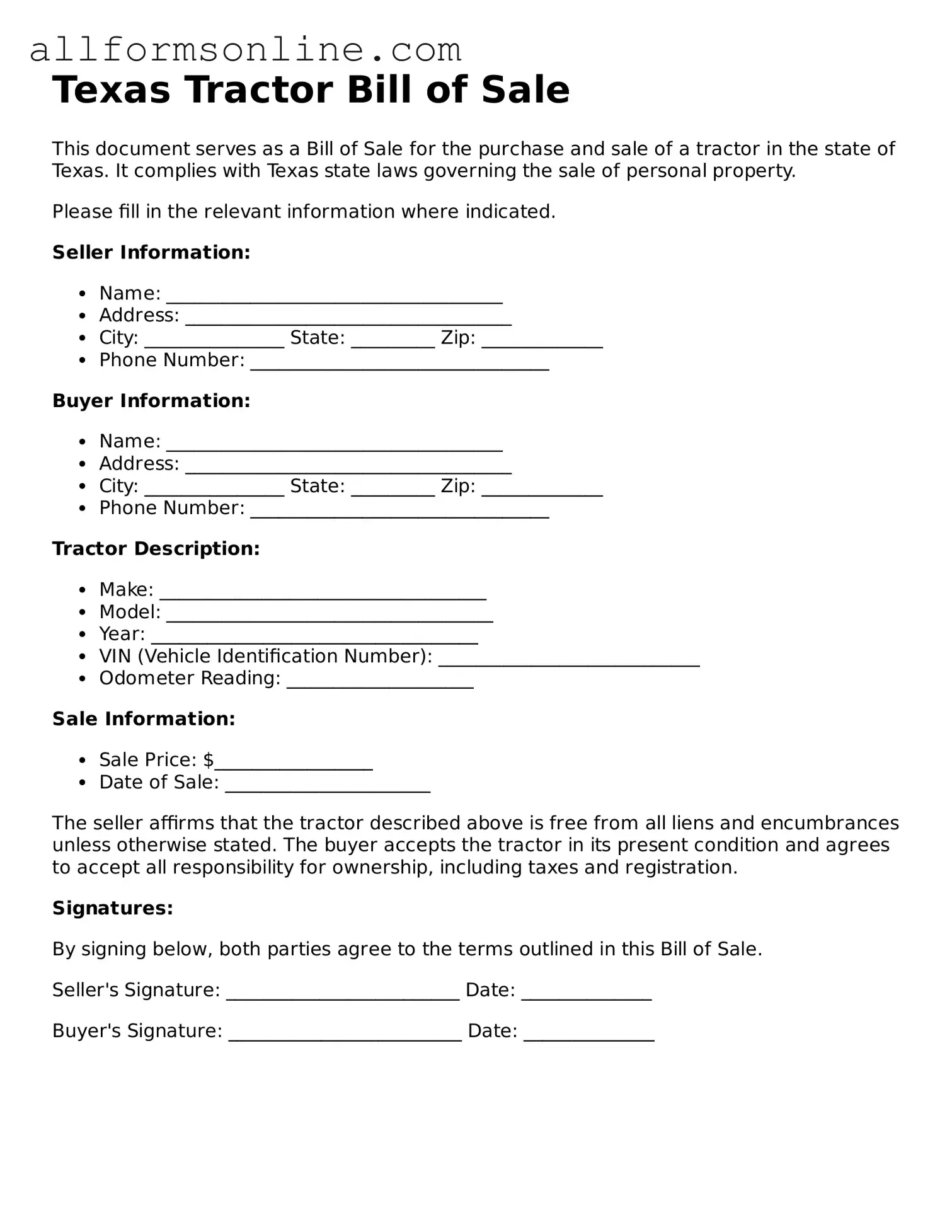What is a Texas Tractor Bill of Sale form?
The Texas Tractor Bill of Sale form is a legal document that records the sale of a tractor between a buyer and a seller. This form provides essential details about the transaction, including the identification of the tractor, the purchase price, and the names and addresses of both parties involved. It serves as proof of ownership transfer and protects the rights of both the buyer and the seller.
Why is a Bill of Sale necessary when buying a tractor in Texas?
A Bill of Sale is crucial for several reasons. First, it provides a written record of the transaction, which can be useful for future reference. Second, it helps establish legal ownership, which is especially important if there are any disputes or questions about the sale. Additionally, having a Bill of Sale can simplify the process of registering the tractor with the Texas Department of Motor Vehicles (DMV) and can be necessary for tax purposes.
What information is typically included in the Texas Tractor Bill of Sale?
Typically, the Texas Tractor Bill of Sale includes the following information: the names and addresses of the buyer and seller, a detailed description of the tractor (including make, model, year, and Vehicle Identification Number or VIN), the purchase price, the date of sale, and any warranties or representations made by the seller. Both parties should sign and date the document to validate the agreement.
Do I need to have the Bill of Sale notarized?
In Texas, notarization of the Bill of Sale is not a legal requirement. However, having the document notarized can provide an extra layer of security and authenticity. It can help prevent disputes in the future by verifying the identities of the parties involved and the legitimacy of the transaction. While notarization is optional, it is often recommended for significant purchases like a tractor.
Can I create my own Texas Tractor Bill of Sale, or should I use a template?
You can create your own Texas Tractor Bill of Sale, but using a template is often advisable. Templates ensure that you include all necessary information and comply with any specific legal requirements. Many templates are readily available online and can be customized to fit your specific transaction. Whichever route you choose, ensure that the document is clear, complete, and accurately reflects the terms of the sale.
